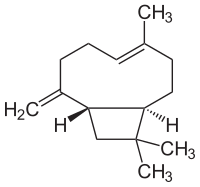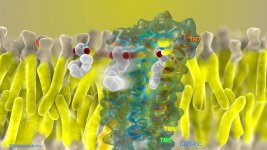Some interesting posts here regarding 'cannabinoid free' [chemotype v] cannabis got me thinking about cannabinoids as a class and the distinctions between cannabinoids as compounds that show affinity for cb1 and cb2 and the benzo chromene type compounds produced by cannabis that are the 'classic' cannabinoids. Many people use the term cannabinoid to refer specifically to these benzo cromene

and acyclic benzo terpenens

type compounds produced in cannabis.
In reality there are a number of compounds found in cannabis that are indeed cannabinoids due simply to their affinity for the cb1 and 2 receptors. Terpenes such as beta caryophyllene [cb2]

could be present in a strain lacking the active enzyme system responsible for the production of the benzo chromene class of cannabinoids. If anyone has a more complete list of phyto cannabiniods present in cannabis could you please post it up or link to it here thanks.

and acyclic benzo terpenens

type compounds produced in cannabis.
In reality there are a number of compounds found in cannabis that are indeed cannabinoids due simply to their affinity for the cb1 and 2 receptors. Terpenes such as beta caryophyllene [cb2]

could be present in a strain lacking the active enzyme system responsible for the production of the benzo chromene class of cannabinoids. If anyone has a more complete list of phyto cannabiniods present in cannabis could you please post it up or link to it here thanks.



